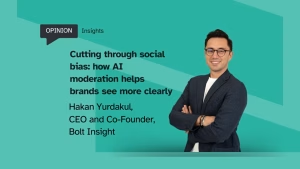By David Lawrence, MD at Platform Communications
Business leaders are constantly seeking expert third-party input to help them navigate rapidly changing markets. CEOs, CTOs and CMOs consult with industry analysts for the insight they need to stay ahead of the competition. This is why successful technology companies see engaging with analysts as critical to their success. However, the role of analyst relations (AR) is often misunderstood and can even be confused with media relations.
With this in mind, we recently spoke to a number of top technology analysts to pool the latest viewpoints about how AR is changing and how vendors can use it to gain a crucial competitive advantage. The findings are published in a new report, Why dynamic analyst relations is pivotal to business success.
Here are some of the key findings:
The face of analyst relations is changing
Major structural shifts across a number of industries are being accelerated by the ongoing repercussions of the COVID-19 pandemic. The analysts we spoke to told us they are busier than ever as they help their clients understand new strategic trends and the technologies they need to succeed. As Maria Rua Aguete, Senior Director, Media and Entertainment at Omdia, explained: “We are seeing many more requests for consultancy from tech buyers and vendors. Tech companies want to know what is going to happen.”
As a tech vendor, there is a clear opportunity to influence senior decision-makers within your target customers – if you build the right relationships with the right analysts.
It’s not just the major analyst houses that have seen an increase in activity. The last year has seen a rise in activity for boutique specialists and independents, too, with independent analyst Ben Keen saying: “This last year has been the busiest in terms of quantity of work, enquiries, number of different clients.” There are more niche specialists now, which is driving a democratisation of AR: it is not solely the domain of large companies. Small- and medium-sized companies have greater access to AR, and major decision-makers, than ever before.
The value of analyst consultancy to tech vendors should not be underestimated. Analysts are speaking to tech buyers across entire value chain every day. They are building trust and strong two-way relationships that can be incredibly valuable to vendors.
Getting AR right
Despite the opportunities available, many vendors struggle to get AR right, placing them at a major competitive disadvantage.
A common mistake is to treat analysts as one big group. Or, worse still, treat them like journalists. Analysts have market specialisms and will be looking for different kinds of input at different times. We heard several analysts complain that vendors were expecting some immediate output and not recognising that the conversation itself can be valuable.
Guy Bisson, Research Director at Ampere Analysis, said: “It’s important to recognise that analyst relations is a two-way conversation. Many companies overlook this and miss out on valuable insights as a result of taking the wrong approach to briefings. For example, I’m more interested in hearing about where you as the vendor see the industry heading and how user behaviour is changing than the latest addition to your product portfolio.”
The key is to put what you do in the right context and make sure the right analysts are getting the information they need. If you’re speaking to an analyst for a specific report, they may be looking for deep-dive input on your technology, product features and specifications. In this case, they will need to understand your product roadmap, where your latest innovations sit in the market, and how they compare to competitor solutions. It’s important to ensure you know what the analyst is looking for ahead of a briefing in order to be properly prepared. Some of the analysts we spoke to voiced frustration at some companies not having the right people in a briefing and having to take the conversation offline or arrange a separate follow-up.
The importance of relationship building
Analyst relationships take time to build and the benefits of engagement come in different shapes and forms. If you’re a tech vendor then the analyst community is your customers’ trusted advisor. Needless to say, it’s important that your company and value proposition are well understood by your target analysts in order for them to be able to relate them to a CEO in a boardroom. This is unlikely to happen after one solitary briefing. Well planned updates explaining your offering and how it fits into the wider market will pay dividends. You may then become a trusted source for analysts to call on – this is a good sign that your AR is working.
Many businesses and industries are navigating uncharted territory and rapidly changing markets. Analysts are more influential than ever in informing the direction of travel for senior technology buyers. If you’re a tech vendor then AR, when approached in the right way, offers a fantastic opportunity to influence and connect with customers.










